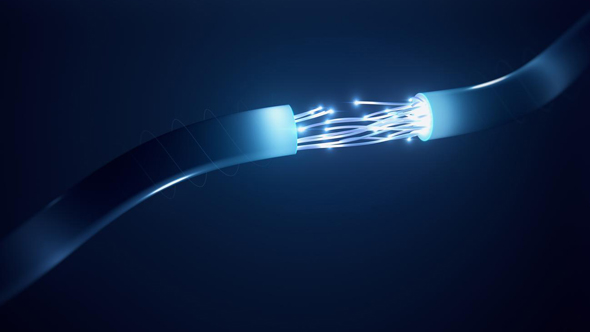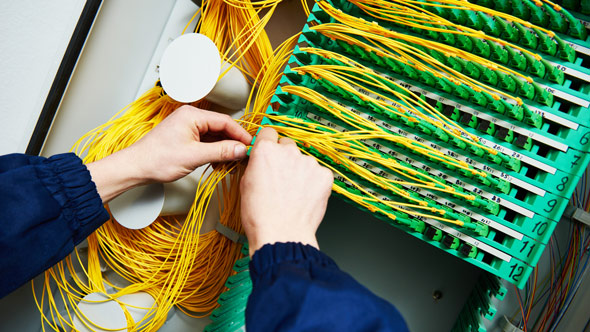We have significant experience in fibre optic cable installations.
Fibre optic cables comprise a number of thin glass or plastic strands, which transmit data in light pulses, enabling fast and reliable communication over long distances. Modern fibre cables can contain up to a thousand fibres in a single cable.
Why fibre optic?
Fibre optic cables allow very fast data speeds (up to terabytes per second). Unlike cat5 and cat 6 cables. Fibre optic cables can offer much longer cable runs, making it desirable for large office and intra-office applications.


FAST AND POWERFUL
Historically fibre optic cables have been restricted to external use and comm-box to comm-box trunking. However, fibre to the desk networks are becoming much more common, offering unprecedented data speeds.
Optical fibre truly is the ultimate communication medium. It is compact and easy to install. It has enormous bandwidth, and is completely immune to EMI and RFI. It does not require special routing in the office and is becoming more affordable.
AVAILABLE IN 2 FORMS
Optical fibre is available in two fundamental forms – single mode and multimode. Traditionally single mode has been used by the phone companies for long distance trunks, whilst multimode has been used by companies for in-house communications. This distinction still exists, although the point of demarcation is blurring, with more single mode being brought into the building.
MULTI-MODE
Multi-mode fibre optics provide a cost-effective solution for short-distance communication applications that require high bandwidth and compatibility with common light sources. We install fibre optic cabling for a range of commercial businesses and office buildings.
MAINTENANCE
We also provide ongoing maintenance and repairs, where Ethernet cabling damage can occur through building work or vandalism. Our fibre optic engineers can perform fusion splicing and repairs in an efficient and effective manner, as well as testing and ongoing maintenance if necessary.